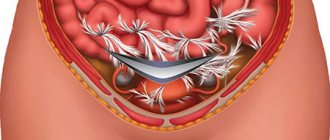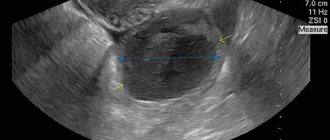Da!Zachatie
Website about pregnancy, from planning to birth
Popular
What you need to know about late ovulation: a normal variant or a sign of a serious pathology?
Home › Women's cycle
Duphaston belongs to a group of medications that are prescribed to women to correct the menstrual cycle and a number of other problems associated with hormonal levels. Therefore, it is very important for women planning to become pregnant in the future to know how Duphaston and ovulation are interconnected, and what the consequences of taking this drug may be.
- 1 Indications for the use of Duphaston
- 2 Pharmacological properties of the drug
- 3 Dosage regimens for various diseases
- 4 Duphaston and lack of ovulation
- 5 Does Duphaston help you get pregnant and maintain a pregnancy?
- 6 Summary
Is it possible to combine Duphaston and alcohol?
In the instructions for the drugs, manufacturers do not always write about the categorical prohibition of drinking alcohol during the course of therapy.
One of these drugs is Duphaston, which is prescribed for hormonal imbalances, problems with conceiving and bearing a child.
The instructions do not contain specific prohibiting information about whether it is possible to combine alcohol and Duphaston, and what consequences such a combination can lead to for the body.
If Duphaston is prescribed to pregnant women or women planning pregnancy, this question automatically disappears. Any sane woman will not drink alcohol while pregnant or planning pregnancy.
But if we are talking about normalizing hormonal levels, alleviating menstrual or menopausal syndrome, then this issue becomes important for some women, despite the fact that the course of treatment with the drug is only 10 days.
In order to understand whether Duphaston is compatible with alcohol, you should know how it works, what it affects and how it is eliminated.
Duphaston is a hormonal drug. The active substance is dydrogesterone. Once in the body, the drug is broken down by liver enzymes and sent to the problem area. When drinking alcohol together with Duphaston, a number of side effects may occur due to increased load on the liver.
All side effects can be divided into several groups, depending on the organ and body system that is affected by the combination of alcohol and medication.
Side effects when using Duphaston and alcohol:
- From the side of the liver.
- From the gastrointestinal tract.
- From the circulatory system.
Now let’s take a closer look at these consequences and try once again to think about whether a small party is worth such a reckoning.
Circulatory system reaction
A completely negative reaction can follow from the circulatory system. Alcohol dilates blood vessels and increases blood circulation. Against this background, as a result of simultaneous use of Duphaston and alcohol, uterine bleeding may occur. And as a result of increased blood circulation, the drug will be eliminated from the body faster, which will significantly reduce its effectiveness.
The side effects listed above will not lead to death, but the unpleasant consequences that will arise if you combine alcohol during the next party and treatment with Duphaston are unlikely to bring many positive emotions.
Another advantage in favor of giving up alcohol during treatment is that Duphaston is used to treat diseases that are associated with increased production of estrogen.
Thus, all treatment with Duphaston is reduced to zero - why suppress the production of estrogen with the help of medication and at the same time deliberately increase the amount of this hormone in the body.
Excretion from the body
The drug Duphaston is completely eliminated from the body within 72 hours, so you should not drink alcohol immediately after completing the course of treatment. You will have to wait another three days to avoid possible unpleasant consequences.
No matter how conscientiously a woman approaches her treatment, there are situations when drinking alcohol is inevitable (for example, an important business dinner on which a career or the financial well-being of a company depends).
In this case, the woman will not have to make excuses and come up with reasons for giving up alcohol.
As a conclusion
Drinking alcohol against the background of hormonal diseases further aggravates the health condition. The combination of alcoholic beverages along with Duphaston therapy is contrary to logic and common sense. Of course, this will not lead to death, but the effectiveness of treatment will decrease.
If we are talking about planning a pregnancy or maintaining it, then this question should not arise for the expectant mother at all. Any amount of alcohol is extremely dangerous for the baby's health.
Of course, whether to combine Duphaston with pregnancy planning or treatment is a personal matter for each woman.
Indications for the use of Duphaston
Like any other hormonal drug, Duphaston is used exclusively as prescribed by a doctor. The main indications for taking this drug include conditions that provoke progesterone deficiency:
- disturbing symptoms of premenstrual syndrome;
- infertility;
- the presence of miscarriages during previous pregnancies;
- endometriosis.
In addition, Duphaston is used during menopause to suppress excessive growth of the endometrium, and also has a positive effect in the treatment of diseases associated with increased levels of estrogen.
As for the effect of Duphaston on ovulation, we will talk about this a little later, having considered all the subtleties of this issue.
Duphaston and menstruation
Many women are interested in the question of how duphaston affects menstruation. The drug, being a synthetic progesterone, performs the function of this hormone. Quite often there are situations when, under the influence of external factors or somatic problems, its level in the patient’s blood drops. This usually leads to a malfunction of the entire reproductive system, especially the menstrual cycle.
Progesterone is the trigger for ovulation and menstrual bleeding. The drug compensates for its deficiency quite easily. Many women note that without duphaston their periods do not come. The subtlety of this situation is that progesterone actively begins to work precisely in the second phase of the menstrual cycle.
It is known that this hormone is responsible for preparing the place in the uterus where the egg should attach. It also stimulates the removal of the endometrium from the female body if the process of conception has not occurred. Duphaston performs the functions of progesterone, but this drug cannot completely replace the natural organic hormone.
“I drank duphaston, but my period didn’t come” - such reproaches are often heard by antenatal clinic workers. A synthetic substance can cause disruption of the menstrual cycle due to its heterogeneity with the woman’s body.
Effect on ovulation
Most doctors, when asked by women whether Duphaston suppresses ovulation or not, give a negative answer. The drug, prescribed in the correct dosage, cannot have a negative effect on egg production. However, it must be borne in mind that it is not recommended to take more than 30 mg of the drug daily. This dose of the hormone, under the influence of various factors, can negatively affect reproductive function.
To check whether Duphaston suppresses ovulation or not, a scientific experiment was carried out. Doctors took several women under observation. They studied how the process of egg maturation develops in them. If the patient had a deficiency in the luteal phase, during which the egg is released from the follicle, she was prescribed this drug. During the next cycle, Duphaston was continued. An ovulation test and an ultrasound machine monitored the release of the egg from the follicle after maturation. In 99% of cases, the process occurred without pathologies and ensured successful implantation. Therefore, when asked whether ovulation can occur after Duphaston, the doctor will only answer in the affirmative.
Composition of the drug
The product is produced only in film-coated tablets on a plastic blister, 20 pieces per package.
The active substance is dydrogesterone. Each tablet contains 10 mg of active ingredient. To enhance the effect, the following substances are included in the composition:
- hypromellose;
- magnesium stearate;
- lactose monohydrate;
- corn starch;
- colloidal silicon dioxide.
The tablet shell consists of white opadry Y1-7000. It contains titanium dioxide, hypromellose and polyethylene glycol.
The tablet has a biconvex shape. There are engravings on both sides. “S T” is placed on one side, and “155” is placed on the other.
Stopping the drug
There is no general opinion among doctors regarding drug withdrawal, but they are all similar in that only a doctor should do so.
In each case, the gynecologist individually develops a plan for discontinuing the hormonal drug under constant monitoring of the level of progesterone in the blood. It may be contained in a normal amount, and then cancellation is prescribed according to the general principle, or there may be a slight deviation from the norm, up or down. In case of such a malfunction of the endocrine system, hormonal drugs are discontinued according to special schemes developed specifically for each specific case and strictly under the supervision of a gynecologist.
The regimen may include reducing the dose by one tablet per day or by 1/2. It is possible to accurately determine the dosage by which the intake should be reduced only after determining the level of the hormone. The cancellation procedure may last several days or may take weeks.
Side effects
When the wrong dosage is chosen or there is an allergy to the components of Duphaston, various side effects may appear. They affect different organs and systems. The main ones include:
If uterine bleeding begins during the appointment, you should immediately go to the hospital. Also, in case of other side effects, the doctor should adjust the dosage of Duphaston. Typically, a slight increase in dose leads to stopping unwanted bleeding and reducing the sensitivity of the mammary glands.
As for allergic reactions, these manifestations should immediately alert you, because they indicate hypersensitivity to the main component. In rare cases, effects such as Quincke's edema and anaphylactic shock have been observed. If these signs appear, you should stop taking Duphaston and consult a doctor about selecting an analogue. Such side effects are a reason to discontinue the drug.
Contraindications and side effects of this hormonal drug
Any medicine can have an ambiguous effect on the human body, and the drug under discussion is no exception. Often, many women complain that duphaston causes stomach pain during menstruation. A certain percentage of patients noted neurological disorders, such as dizziness or headache.
Duphaston can cause heavy periods in about 10% of cases of its use. This is due to the ambiguous effect of the drug on the uterine mucosa and its epithelium. Most experts believe that this medicine does not affect the growth of the uterine epithelial layer, but various options are possible.
It is not uncommon to hear the following statements in the antenatal clinic: “I took duphaston, my breasts hurt every time I have my period.” This symptom is also a consequence of an increase in progesterone in a woman’s blood. This hormone affects the functioning of the milk ducts, and their excessive activity can cause pain.
In addition, duphaston causes fluid retention in body tissues. The mammary glands already increase in size before menstruation, and the effect of the drug increases the swelling of the mammary glands. The influx of fluid increases tension and can lead to pain.
Various allergic reactions cannot be ruled out when taking this drug. Some patients noted nausea, a rise in body temperature, and rashes on different parts of the skin. If such symptoms occur, you should stop taking duphaston and consult your doctor for help.
USEFUL INFORMATION: Causes of testicular pain in men, list of possible diseases and their symptoms
What you need to know about duphaston
Duphaston is an artificially created progesterone (gestagen). Typically, synthetic progesterone is created using the male hormone testosterone. It gives some physical changes to a woman. For example, body hairiness increases, rough notes of voice timbre appear, and so on.
The presented drug Duphaston is made on the basis of another substance called dydrogesterone, so there is no effect on androgenic effects.
Duphaston has won the hearts of many ladies and gynecologists around the world because of its positive effect, and also because it can be taken during pregnancy, since it has no effect on the embryo.
In some cases, Duphaston can be prescribed without preliminary tests, because the lack of progesterone in a woman’s body is noticeable to an experienced specialist even without laboratory tests.
Medical indications for taking this drug are as follows:
- Risk of miscarriage;
- Bloody discharge in the first months of pregnancy;
- If there were relapses of miscarriage;
- Endometriosis;
- Dysmenorrhea (painful periods);
- Infertility;
- Lack of menstruation due to oral estrogen use or irregular cycles;
- Irregular menstrual cycle;
- If there is no menstruation for many months;
- PMS;
- Planning a pregnancy, where you need to adjust your hormonal levels so that there is successful implantation of a fertilized egg, and then a successful pregnancy.
Like any other drug, Duphaston has some contraindications for use:
- Allergic intolerance to any component of this product. He is alone, but very important. If you discover this problem, you should stop taking the drug immediately and consult your doctor for advice.
- Some caution should be exercised by women who have problems with non-inflammatory liver diseases - hepatosis;
- While taking Duphaston, it is recommended to avoid strong drinks, as this can lead to a decrease in its effect on the body or its absence altogether.
The side effects that this device causes are the following:
- Dizziness;
- Migraine;
- Nausea;
- Allergic rash and itching;
- Bloating;
- There may be spotting between cycles;
- Interaction with other drugs has not been scientifically established.
Therefore, before using anything in parallel, you need to consult a doctor.
Compatibility of Duphaston and alcohol
Many women are concerned about this question: is it possible to drink alcohol while taking duphaston, because this hormonal drug is usually prescribed for a long term. For example, in case of hormonal disorders and a lack of progesterone in the second phase of the cycle, you need to take duphaston for at least 3-6 months in a row.
During this period, many situations can happen when a woman is invited to a feast, and in some cases, refusing to drink is considered bad manners.
For this reason, you should find out whether it is possible to combine alcohol with duphaston, is smoking allowed and what about beer - a low-alcohol drink? All these questions are worth understanding.
What is this drug?
The medication is a synthetic analogue of the natural hormone progesterone, which is intensively produced by the corpus luteum upon the onset of the second phase of the cycle after ovulation.
Very often, modern women of reproductive age tend to decrease it and predominate in the body of estrogens, which replace progesterone. To equalize hormonal levels, you need to take an exogenous hormonal drug.
The medicine is most often prescribed for endometriosis, severe premenstrual syndrome, painful menstruation and miscarriage.
Is it possible to take duphaston and alcohol together?
Doctors are of the opinion that the combination of any alcoholic beverages with hormonal medications is contraindicated due to the fact that ethanol itself can negatively shift female hormonal levels, which, with frequent consumption of strong drinks, will inevitably provoke hormonal imbalance. Therefore, it is not recommended to mix duphaston with alcohol.
However, there is one thing - no specific incompatibility of these two substances was found. There have been no reported cases of alcohol poisoning while taking duphaston.
From the above information we can conclude that drinking alcohol with duphaston is a bad idea, but if you take alcohol once in small quantities, poisoning will not happen.
Why can’t you drink alcohol while being treated with duphaston?
The fact is that possible negative consequences when taking progesterone and alcohol simultaneously may not occur, but this does not mean that there is no harmful effect on the body. First of all, the liver is heavily overloaded.
As is known, toxic breakdown products of alcoholic beverages are processed by the liver, as well as synthetic steroid hormones, which include duphaston.
If a woman drinks alcohol and hormones at the same time, it creates a double whammy, which can lead to unpleasant side effects if drinking becomes regular during treatment. Heaviness and pain in the right side, nausea in the morning, and vomiting of bile may appear.
There is also a medical opinion that when drinking alcohol with duphaston, the exogenous progesterone analogue is poorly absorbed, and as a result, the treatment practically does not bring the desired effect. For this reason, it is better to refrain from grandiose feasts, and if absolutely necessary, limit yourself to one glass of good wine, but no more.
Is it possible to drink beer with duphaston?
This is also an important issue, because regular consumption of beer in the CIS countries has become the norm, since this drink is classified as low-alcohol. The myth about beer and steroid drugs should be debunked - this is the same alcohol that has a negative effect on the endocrine system, like any other types of alcohol - vodka, wine, brandy, cognac.
The fact that it contains a low degree does not mean that it can be regularly consumed during treatment with the drug. In addition to the liver, beer also puts a lot of stress on the kidneys, since a large volume of fluid passes through them.
Beer also contains a large amount of plant phytoestrogens, which, if consumed regularly, can disrupt the hormonal balance by increasing estradiol and decreasing progesterone.
Smoking and Duphaston - can you combine it?
A woman who is accustomed to smoking a large number of cigarettes every day for a long time is unlikely to give up her bad habit during treatment with a hormonal drug, but more thrifty people should quit.
Smoking worsens the condition of blood vessels, and while taking duphaston there is a high risk of developing venous insufficiency or varicose veins.
This is especially dangerous for people who already have a history of the disease or are prone to it.
Use during pregnancy
Some women cannot get pregnant due to a lack of progesterone in the body. To compensate for the hormone deficiency, various drugs are prescribed, including Duphaston tablets. This is an analogue of progesterone, created artificially. The main substance, dihydrogesterone, is close in structure to the natural hormone. An artificially produced substance can have the same effect on the body as a natural remedy.
If it is impossible to get pregnant or if the fetus is miscarried, the gynecologist prescribes a series of tests, based on the results of which a progesterone treatment regimen is selected. It is he who is responsible for preserving the fetus and the ability to become pregnant.
"Duphaston" is a hormonal drug that should only be prescribed by a doctor, and in cases where a decrease in progesterone in the female body is laboratory proven. Most often, the drug is prescribed from the second half of the menstrual cycle and continues until the onset of menstruation. If pregnancy does not occur during this period, the doctor will review the treatment regimen.
If pregnancy occurs, you cannot suddenly stop taking the drug, as a sharp drop in the amount of the hormone can lead to miscarriage. Therefore, if conception occurs, the woman must continue taking the drug until the doctor stops it. This happens gradually so that the body can begin producing its own hormone.
Some pregnant women also use synthetic hormones during pregnancy. During this period, uterine stimulation may occur. To relax her, Duphaston is prescribed. However, it is worth considering that during administration the intestines also relax, and the mammary glands begin active preparation for lactation. Therefore, a gynecologist can prescribe progesterone not only to make a woman pregnant, but also to preserve the fetus, creating favorable conditions for its development.
Around the twentieth week, the placenta is so developed that it is able to support the body by producing additional hormones to maintain the pregnancy. During this period, it is advisable to stop taking progesterone. This is done smoothly, otherwise a sharp decrease in hormones will lead to an increase in the tone of the uterus and a deterioration in the nutrition of the placenta.
How does Duphaston act on the female body?
Thanks to Duphaston:
- a pronounced maternal instinct appears;
- the figure becomes more feminine;
- the endometrium becomes looser and helps the fertilized egg to attach better;
- The muscles of the uterus relax if fertilization has not occurred.
For information about planning a pregnancy while taking Duaston, watch this video:
The drug quickly replenishes progesterone deficiency. After 14 days, the amount of the hormone reaches the desired level.
Taking Duphaston may be required when a girl cannot become pregnant for a long period of time, despite frequent attempts and unprotected sexual intercourse.
Use for disturbances in the menstrual cycle
The main characteristic of a normal menstrual cycle is regular periods. The average length of a woman's cycle is 28 days. Menstruation after Duphaston occurs against the background of an increase in progesterone levels after ovulation
Hormonal regulation is very important for the normal course of the menstrual cycle; any disruption in the production of the main sex hormones leads to a delay in menstruation or their irregular appearance. Typically, hormonal imbalance occurs due to:
- chronic, sluggish
Diseases of the female genital organs
;
Cycle failure is one of the most common indications for the use of Duphaston in women of reproductive age. Duphaston tablets should be taken strictly according to the regimen prescribed by your doctor. Treatment usually lasts from the 16th to the 25th day of the menstrual cycle. The daily dose of the drug is 20 mg, one tablet is taken in the morning and the second in the evening.
Remember that Duphaston should be taken only if there are clear medical indications. It is dangerous to use this drug in order to induce menstrual bleeding and postpone it to a more convenient time for you. In such cases, after stopping the drug, menstruation occurs under artificially induced conditions, which can have serious consequences for your health in the future.
USEFUL INFORMATION: Pregnancy in the absence of fallopian tubes
When is the drug taken
In most cases, the drug is recommended to be used after the arrival of ovulation. To determine it, you need to pay attention to the basal temperature chart or use specialized tests.
The need to take the drug after ovulation is explained by the fact that in the second phase of the cycle, progesterone is produced naturally. In this case, the medication is aimed at normalizing natural hormonal levels.
Occasionally, taking the drug may be recommended from the first days of the menstrual cycle. This treatment is suitable for women with the following indications:
- endometriosis;
- hyperplasia;
- amenorrhea.
Sometimes it can be used for endometriosis.
The doctor selects the appropriate method of treatment and duration of the course after a comprehensive examination of the body.
The medication does not block ovulation and does not promote follicle growth. The drug will only work if used correctly.
Does Duphaston have contraceptive properties?
Is Duphaston a contraceptive?
Can the drug be considered as a birth control pill? You can give an affirmative answer - no. This medicine does not have a contraceptive effect. It is not capable of causing spontaneous abortion and does not threaten termination of pregnancy. On the contrary, it promotes pregnancy by maintaining normal progesterone levels. Women taking the drug to prevent pregnancy do not achieve their goal with dydrogesterone stimulation.
The drug is prescribed for infertility if there is progesterone deficiency. If pregnancy cannot occur within a year of regular sexual activity, the doctor may recommend taking Duphaston. A daily dose of 20 milligrams is divided into two doses at equal intervals from the 11th to the 25th day of menstruation. Therapy is continued for up to 6 months. If pregnancy is confirmed, there is no need to stop taking the drug. The doctor adjusts the dose based on examination and examination data. Usually, it corresponds to that prescribed for fetal loss.
In cases where recurrent miscarriage is observed, Duphaston can be effective in a daily dosage of 10-40 milligrams, taken according to the classical regimen. Taking the drug continues for up to 14-16 weeks continuously (daily). Do not suddenly stop taking the drug. Abrupt withdrawal of Duphaston can cause a miscarriage. The correct thing to do would be to consult a doctor and follow the proposed scheme for gradual withdrawal of the medication.
What if conception occurs?
If a woman becomes pregnant while using Duphaston, then stopping its use on the 25th day of the cycle (as the instructions advise) is strictly prohibited. Otherwise, the new state may be interrupted. The dose of hormonal support should be gradually reduced from 14-16 weeks, abandoning it completely by the middle of the gestational period. The same regimen should be followed if Duphaston is prescribed when there is a threat of miscarriage in the first trimester.
Duphaston is an analogue of natural progesterone. The drug does not cause unpleasant consequences, unlike other androgenic progestogens. Despite all the advantages of the drug, it is unacceptable to use it on your own. Successful experience of using the medication with friends or positive reviews should not become calls for self-medication. If there are problems with the menstrual cycle, the patient should contact a gynecologist and receive an individual regimen for taking the hormonal drug.
Why and to whom is duphaston prescribed?
Duphaston is a biconvex white tablet. The drug contains dydrogesterone in an amount of 10 mg. This active component determines the principle of operation of the hormonal medicine.
Dydrogesterone is a progestogen that is active when taken internally. In its molecular structure, physical and chemical properties, the substance is similar to natural progesterone. Normally, this hormone is released in the second phase of the menstrual cycle. If the natural process is disrupted, unpleasant circumstances may arise:
- luteal insufficiency;
- endometriosis;
- endometrial hyperplasia;
- uterine bleeding;
- irregular cycle;
- miscarriage or infertility.
Duphaston will help solve the problem
It is important to take it correctly in each individual case, since any problem requires an individual approach. Treatment with Duphaston is carried out not only in women of reproductive age
This drug is actively prescribed to patients for hormone replacement therapy after menopause.
Once in a woman’s body, the pills immediately begin to compensate for the lack of natural progesterone. After two hours, the concentration of the active substance reaches its maximum.
When the cycle is restored
Many patients are interested in how quickly menstruation will improve after Duphaston, and how many days later menstruation will come. Doctors advise not to rush to stop using the medicine - the duration of therapy can be completely different. The recommended course duration is from 1 to 5 months. If the disturbances are caused by small functional solutions, everything is restored already on the third day after the drug is stopped.
Sometimes menstruation may occur before the end of treatment. However, in this case, it is recommended to continue taking it without deviating from the regimen prescribed by the doctor. This is necessary so that the woman’s hormonal levels are completely normalized.
Pregnancy and duphaston
So, pregnancy occurred while taking duphaston at the planning stage, what next?
And then the doctor, who will monitor the progression of pregnancy, will recommend continuing to take the drug for some more time, as already mentioned, up to 16 weeks.
Why? Since there was not enough progesterone in the second phase of the menstrual cycle even before pregnancy, there will be some deficiency in its first weeks. Therefore, there is no way to stop taking the medicine, otherwise the matter may end sadly.
Why is duphaston needed during pregnancy?
Then, it will make up for the lack of progesterone, that is, it will take over its functions. Duphaston will maintain the activity of the corpus luteum, relax the muscles of the uterus, and have an immunosuppressive effect so that the mother’s body does not perceive the embryo as a foreign object and expel it. In addition, the drug is necessary for the development of the mammary glands, preparing them for breastfeeding.
In what cases is duphaston prescribed during pregnancy?
- Firstly, as a continuation of taking the drug during planning, secondly, if during this pregnancy there are signs of an incipient miscarriage, confirmed by hormonal studies of progesterone deficiency, thirdly, duphaston is necessarily prescribed after the IVF procedure as pregnancy-supporting therapy.
How is duphaston prescribed during pregnancy?
It all depends on the situation, the severity of the clinical manifestations of progesterone deficiency - spontaneous abortion, tolerance, the woman’s age, medical history and many other factors. In case of clear signs of a threat of miscarriage, the dosage of the medicine can be increased to 4 tablets per day, that is, 40 mg daily. Of course, the price of duphaston is high, but the game is worth the candle, isn’t it? But I would like to reassure expectant mothers that from the moment they start using the drug, the signs of a threatened abortion in the early stages very quickly stop, bloody discharge from the genital tract disappears, the pain goes away, and the woman’s well-being significantly improves.
How long does it take to take duphaston?
The drug must be taken until the situation stabilizes and there is no obvious or hidden threat of pregnancy. Usually, the need for duphaston disappears after 16 weeks of pregnancy (see calculating the duration of pregnancy by week), but in some cases the threat of miscarriage may arise at a later date, so it is taken up to 20 weeks. The withdrawal of the drug does not occur simultaneously, this can provoke a new one. a round of threat, but gradually.
Let’s say a woman was on four tablets a day, which means that within a week the dose of duphaston is reduced by 10 mg, that is, 3 tablets remain daily. If pregnancy develops normally during a week of taking the drug at this dosage, then during the next week the dose is reduced by another 10 mg, leaving 2 tablets.
Again, pregnancy is monitored by taking 20 mg per day for 7 days, if in this case there are no signs of a threat, leave one tablet and then stop taking the drug.
Does Duphaston help you get pregnant and maintain a pregnancy?
Does Duphaston stimulate pregnancy? An interesting question and for many women who are planning a pregnancy, it is very relevant. You can read more about this in our article.
In this matter, I would like to start with the fact that progesterone and progesterone are different. There is only one type of progesterone that is natural to humans - endogenous, produced by the woman’s body. In nature, progesterone is produced by female animals and plants, in particular yam, from which synthetic analogues are actually made.
This is its “native” hormone, while others obtained as a result of biochemical processes are perceived by the body as “foreign”.
But the point is this: natural progesterone is produced first by the corpus luteum, and after 7-8 weeks this function “transfers” to the chorion, the placenta. The bulk of placental progesterone circulates in the blood of the placenta, and if it enters the mother’s blood in the quantities in which it is produced by the chorion, she may experience a huge number of serious complications, some of which are dangerous to her health and life.
Unreasonable administration of exogenous progesterone - most often Duphaston and other drugs identical in purpose are prescribed without justification, being a myth, rumor, fashion - can radically disrupt the ratio of endogenous hormones, thereby provoking a relationship between luteal and placental progesterone during pregnancy.
Thinking, wise doctors are not yet ready for the extensive use of exogenous progesterone, which is Duphaston, in gynecology, since it still continues to amaze with its independence in absorption and influence on cells and tissues - we are not talking about synthetic progestins. To this day, the mechanism of interaction between exogenous and endogenous progesterone has not yet been fully studied.
Therefore, in answer to the question whether Duphaston helps maintain pregnancy, we can clearly say - no! If a woman’s body has enough “own” progesterone, then pregnancy will proceed normally and without additional medications. Whereas with a lack of endogenous progesterone, the issue of maintaining pregnancy must be resolved more radically.
Let's deal with progesterone
Progesterone is a steroid hormone and is produced in a woman’s body by the ovaries and adrenal glands. The role that progesterone plays in the functioning of the reproductive sphere is irreplaceable; the menstrual cycle, fertilization and further pregnancy depend on the level of this hormone.
As you know, the menstrual cycle is divided into 2 phases: follicular (proliferative) and luteal (secretory).
- In the first half of the cycle, estrogens predominate, under the influence of which the dominant follicle matures. At the moment of ovulation (rupture of the main follicle), the content of progesterone reaches its peak, the “newly made” egg leaves the follicle and enters the fallopian tube. In place of the burst follicle, a corpus luteum is formed, which maintains (synthesizes) progesterone levels at the same levels. Under the influence of the described hormone, secretory changes occur in the functional layer of the uterine mucosa, it thickens, loosens, and the blood supply in it increases.
All the processes described are designed to create favorable conditions for the introduction or implantation of an egg that has been fertilized by that time. If conception has occurred, the corpus luteum continues to function as before, maintaining progesterone levels at a constant level. This is explained by the properties of the hormone:
- It supports secretory changes in the endometrium, necessary for the further progression of pregnancy, Suppresses uterine contractions, thereby preventing the rejection of the fertilized egg. Progesterone affects the development of tissues, primarily the mammary glands, and prepares them for breastfeeding. The hormone also has some sedative effect, inhibits the activity and bright emotions of a woman and stimulates the growth and stretching of the uterus as the gestation period increases.
Due to the listed “abilities” of progesterone, it is called the pregnancy hormone. Indeed, if it is insufficient, neither fertilization nor further development of pregnancy is possible. A reduced level of progesterone in the blood indicates either insufficiency of the second phase of the cycle or reduced function of the corpus luteum or placenta.
Lack of the hormone can be manifested by intermenstrual bleeding (see discharge in the middle of the cycle), threat of miscarriage and retardation of intrauterine development of the fetus.
How is Duphaston used if you want to get pregnant?
Duphaston can be prescribed after ovulation when planning pregnancy. The drug activates the normal functioning of the corpus luteum. In addition, the drug has a beneficial effect on the endometrial layer.
Thanks to the drug, the fertilized egg is tightly attached to the endometrium. The medication is prescribed even when fertilization is successful. The medicine maintains normal uterine tone.
Under the influence of the medicine, normal uterine tone is restored. This reduces the risk of rejection of the fertilized egg.
Duphaston helps prevent spontaneous miscarriage in the presence of the following problems:
- risk of detachment of the fertilized egg;
Duphaston helps prevent uterine hypertonicity
- hematomas;
- bleeding;
- hypertonicity of the uterus.
The medicine is taken, especially during pregnancy, only with prior agreement with the attending physician.
Contraindications and negative reactions
Contraindications to the use of duphaston is individual intolerance to the components of the drug. When using the drug in the presence of hypersensitivity, severe adverse reactions occur. The most common side effects from using duphaston include:
- headaches, including migraine headaches;
- hives;
- skin itching;
- Quincke's edema;
- allergic rash;
- swelling in the limbs;
- increased sensitivity of the mammary glands;
- abdominal pain, weakness, malaise, jaundice.
USEFUL INFORMATION: What is done after laparoscopy. Pregnancy after laparoscopy indications, contraindications, photos
A rare complication from taking the drug is hemolytic anemia, a condition characterized by the destruction of red blood cells in the bloodstream. In exceptional cases, it is possible to develop abnormal uterine bleeding that is breakthrough in nature. If a dangerous condition occurs, it is necessary to stop taking the drug and urgently take the patient to the doctor.
In addition, duphaston is not recommended for use during breastfeeding. The medicine is highly active and easily penetrates into mother's milk, with which it can enter the baby's body. The effect of the drug on children's metabolism is unpredictable, and complications may arise due to the penetration of the drug. Therefore, it is recommended that the mother stop using the drug during lactation.
Contraindications
Consulting a doctor before taking the drug is essential. A healthcare professional will help you determine the exact dosage. He will be able to determine whether there are contraindications for taking the drug. You cannot use Duphaston if you have the following pathologies:
If the drug has never been taken before, it is recommended to start the course with the minimum dosage. Then, if you have allergic intolerance, you can avoid negative consequences.
Feasibility of application
Amenorrhea, in which the cycle may be delayed by 2-3 days, usually does not cause concern for the fair half of humanity, but in the absence of menstruation for a long period, it is worth thinking about existing problems.
If menstruation does not occur within a week or this problem recurs frequently, you should consult a doctor. A consultation with a gynecologist and confirmed test results will indicate an effective technique to restore the disorder. The use of Duphaston makes it advisable in the following cases:
- luteal phase deficiency;
- endometriosis;
- threat of miscarriage;
- menstrual irregularities;
- pronounced premenstrual syndrome (PMS);
- secondary amenorrhea due to gynecological diseases;
- in order to prevent negative effects on the uterine mucosa due to estrogen intake;
- as replacement therapy for surgical interventions (removal of the uterus, appendages, ovaries).
When menstruation is delayed, Duphaston gently eliminates the insufficient level of estrogen in the female body.
A delay in taking Duphaston can be easily eliminated with minor hormonal dysfunction. Duphaston is one of the few highly active drugs that can be used among all age categories. Rational use of the drug allows you to regulate the menstrual cycle and helps eliminate many problems associated with imbalance of hormones in the body. How to take Duphaston to induce menstruation? To induce menstruation, you need to drink Duphaston, adhering to the treatment regimen. The standard scheme, which allows you to normalize the menstrual cycle, is used in most cases. It involves the use of Duphaston 10-20 milligrams per day, divided into two doses. The start of therapy is indicated from the 11th day from the start of menstruation. The duration of use reaches up to the 25th day of the cycle.
An important point: before starting therapy, you should donate blood for hCG or do a test to make sure there is no pregnancy. Delayed menstruation may be associated with conceiving a child. If you receive a negative result, you must start taking Duphaston according to the regimen prescribed by your doctor.
For more significant disorders, it is necessary to drink Duphaston in combination with estrogens. The inclusion of ethinyl estradiol in the treatment regimen at a dose of 0.05 milligrams confirms its effectiveness after 3 months of use. Duphaston for normalizing the cycle pleases with the results after one month of use, but you should not stop treatment with the medicine. Any changes in the regimen must be adjusted by the attending physician.
In the absence of menstruation, Duphaston is used depending on the reason for the absence of menstruation. Therapy can be continued for up to six months. This duration is indicated for pronounced premenstrual syndrome, painful and heavy periods. In any case, Duphaston tablets are taken based on the phase of the menstrual cycle and individual characteristics, clinical manifestations of the disease.
The scheme for using Duphaston is presented in the table:
| Pathological condition | Application diagram | Course of therapy |
| Infertility | 10 mg per day from 14 to 25 days of the cycle | 6 months |
| Threatened miscarriage | 40 mg once and then 10 mg every 8 hours | until symptoms disappear with gradual withdrawal of the drug |
| Habitual miscarriage | 10 mg 2 times a day | up to 16-20 weeks of pregnancy with gradual withdrawal of the drug |
| PMS | 10 mg 2 times a day from days 11 to 25 of the cycle | until the condition normalizes |
| Irregular menstruation | 10 mg 2 times a day from days 11 to 25 of the cycle | until the condition normalizes or pregnancy occurs |
| Dysfunctional uterine bleeding (treatment) | 10 mg 2 times a day | 5-7 days or until bleeding stops |
| Dysfunctional uterine bleeding (prevention) | 10 mg 2 times a day from days 11 to 25 of the cycle | 3-6 months |
Rules of use
Before prescribing a medication, the doctor must examine the patient. We are talking about blood testing for hormones, folliculometry, and other types of ultrasound. The doctor prescribes taking pills during the second part of the MC and until the start of the next menstruation. If we talk about the daily dose, it is also determined by the gynecologist. It is important that the tablets are taken at the same time.
As for the classical regimen, the medicine is used for 11 days, starting from 14 DC. It is canceled on the 25th day. When only one capsule is prescribed, it is drunk in the morning, if two - in the morning and in the evening, the duration between doses should be at least 12 hours.
Why is Duphaston prescribed for infertility?
Duphaston is a gestagenic drug containing dydrogesterone, an artificial analogue of natural progesterone, having an identical molecular structure, pharmacological and chemical composition.
When insufficient progesterone is produced naturally, problems arise with conception and pregnancy up to 10-14 weeks. The medicine replenishes the hormone deficiency without causing serious side effects.
The drug is prescribed to increase hormone levels so that egg implantation becomes possible.
Treatment will be effective when examination of the woman confirms that the cause of infertility is hormonal disorders.
What cures
At the discretion of the doctor, the drug can be prescribed to create optimal conditions for IVF (in vitro fertilization).
Also indications for prescribing are:
- risk of miscarriage;
- bleeding in early pregnancy;
- endometriosis;
- uterine bleeding;
- painful manifestations of symptoms during PMS;
- severe and prolonged pain during menstruation;
- insufficient luteal phase of the menstrual cycle;
- amenorrhea.
The hormone is required for the accumulation of fat in the pregnant woman’s body (she is still breastfeeding a child), relaxation of the muscles of the uterus and intestines.
How to drink
The doctor prescribes the drug treatment regimen individually for each patient; there is no universal advice here. As a rule, therapy begins the day after ovulation. Methods of use and doses are described in detail in the instructions for the drug. If the cause of infertility is endometriosis, the medication is prescribed 3 times a day, 10 mg on days 5-25 of the cycle or regularly.
When conception does not occur due to luteal insufficiency - 10 mg 3 times a day on days 14-25 of the cycle. Treatment cannot be interrupted during 6 cycles; even during the first 2-3 months after conception, Duphaston is not canceled.
Helpful information
Duphaston suppresses the growth of the endometrium, characteristic of the first phase of the menstrual cycle, and normalizes secretion. The mechanism of action of the drug is the same as that of progesterone, but the advantage of the former is that it is used orally, and not by injection of an oil solution.
There is no suppression of female sex hormones. Dydrogesterone (the active substance) is not a derivative of androgens, therefore it does not have properties characteristic of them. There is no risk of weight gain or blood clots.
Dydrogesterone enhances the positive effects of estrogens during menopause without having a negative effect on blood clotting.
The uniqueness of the mechanism of action lies in the fact that the effect of treatment is achieved while maintaining ovulation.
The menstrual cycle does not go astray. A synthetic analogue of the natural hormone, dydrogesterone, reduces the degree of excitability of the myometrium, and the contractile activity of the uterus also decreases.
The effectiveness of Duphaston is reduced when used simultaneously with Rifampicin or Phenobarbital, which affect liver microsomal enzymes. These medications increase the rate of biological transformation of Duphaston. There is no data on drug incompatibility of the drug with other drugs and biological additives.
Indications
The main reason why the doctor prescribes the use of Duphaston is a critical lack of the hormone progesterone. This pathology can provoke the following diseases and conditions:
- endometriosis – the appearance of endometrial foci outside the uterus;
- threat of miscarriage due to low levels of endogenous progesterone;
- primary and secondary infertility caused by luteal insufficiency (decreased functional activity of the corpus luteum of the ovary);
- premenstrual syndrome associated with severe pain, mood swings and other functional changes in the female body;
- secondary amenorrhea - absence of menstruation that appears after a disease of the reproductive system;
- dysmenorrhea – disruption of regular menstruation;
- uterine bleeding of various etiologies.
In addition, the drug can be prescribed by a gynecologist if hormone replacement therapy is needed. It is administered when it is necessary to neutralize the increased effects of the hormone estrogen on the endometrium. Often, an effect such as natural or induced postmenopause appears after surgery, so treatment with hormones is required.
Drug price
Currently, the pharmacy chain offers the drug Duphaston, produced in the Netherlands. The price ranges from 250 to 400 hryvnia depending on the size of the package. The dosage of capsules is the same everywhere – 10 mg.
It should be noted that in most pharmacies in Russia this drug costs much less. On pharmacy shelves you can find Duphaston from the Dutch company Abbott Biological, packaged in the same way for 450 - 500 rubles for one package of 20 capsules.
Treatment of all menstrual problems with this drug seems to be quite beneficial and affordable for most patients in gynecological departments and antenatal clinics. If a woman carefully follows all the recommendations of her doctor and does not self-medicate, many hormonal diseases of the female genital area can be overcome quickly and at minimal cost.
Reviews
If the prescribed dosage is followed and the rules of administration are followed, the patient notices a relationship between Duphaston and ovulation. The reviews left about the medicine prescribed for the absence of menstruation are positive. The drug is effective in most cases. Women write that they asked the gynecologist in advance whether Duphaston suppresses ovulation. Separately, patients note the affordable price of the drug, which is affordable to many categories of the population.











